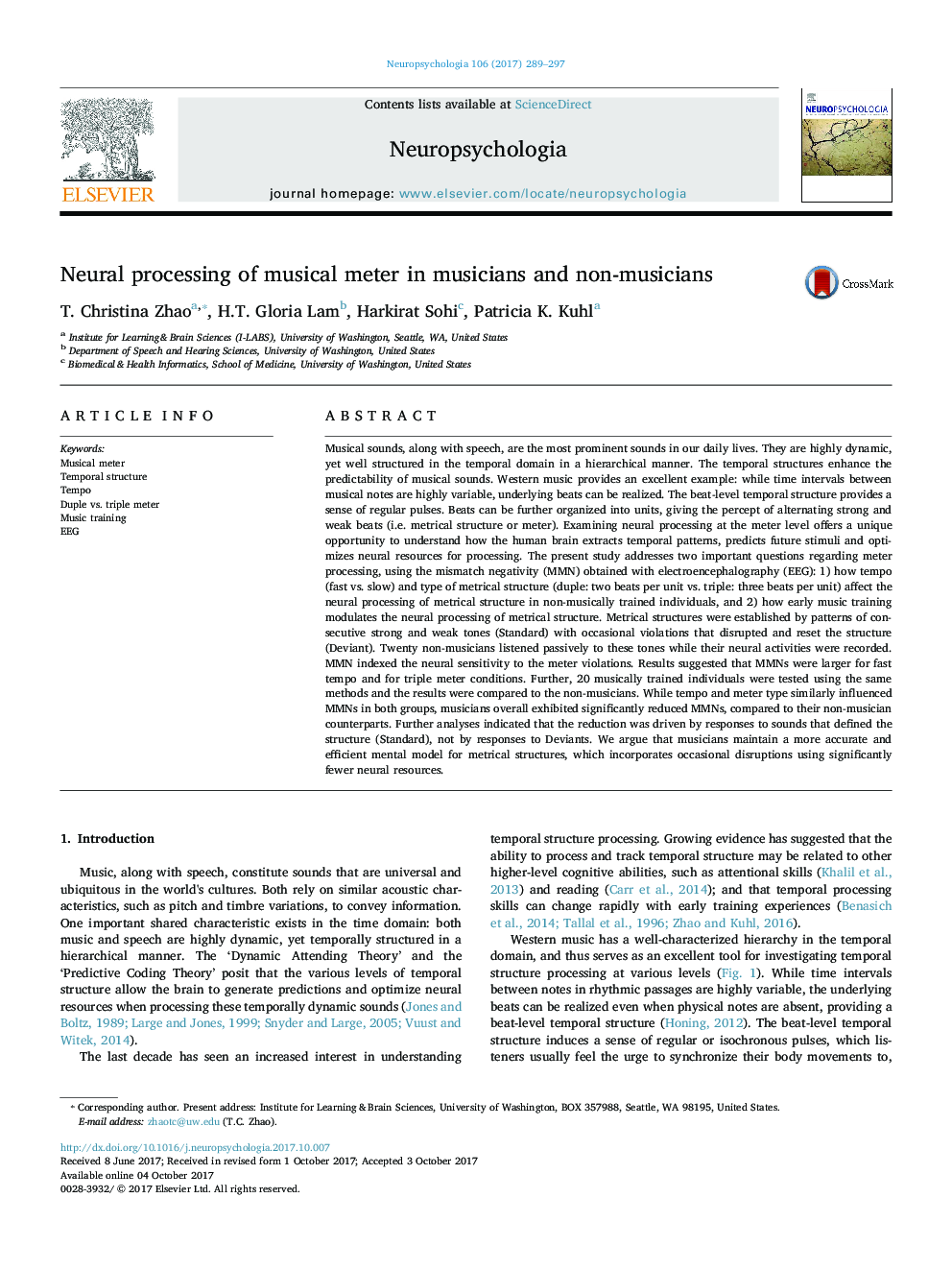| کد مقاله | کد نشریه | سال انتشار | مقاله انگلیسی | نسخه تمام متن |
|---|---|---|---|---|
| 5045053 | 1475549 | 2017 | 9 صفحه PDF | دانلود رایگان |
- Effects of Tempo, Meter type and Music training were examined on meter processing.
- MMN as the main measure to index neural sensitivity to occasional meter violations.
- Larger MMNs observed for fast tempo conditions than slow tempo conditions.
- Larger MMNs observed for triple meter conditions than duple meter conditions.
- Musicians exhibited reduced MMNs overall, suggesting higher processing efficiency.
Musical sounds, along with speech, are the most prominent sounds in our daily lives. They are highly dynamic, yet well structured in the temporal domain in a hierarchical manner. The temporal structures enhance the predictability of musical sounds. Western music provides an excellent example: while time intervals between musical notes are highly variable, underlying beats can be realized. The beat-level temporal structure provides a sense of regular pulses. Beats can be further organized into units, giving the percept of alternating strong and weak beats (i.e. metrical structure or meter). Examining neural processing at the meter level offers a unique opportunity to understand how the human brain extracts temporal patterns, predicts future stimuli and optimizes neural resources for processing. The present study addresses two important questions regarding meter processing, using the mismatch negativity (MMN) obtained with electroencephalography (EEG): 1) how tempo (fast vs. slow) and type of metrical structure (duple: two beats per unit vs. triple: three beats per unit) affect the neural processing of metrical structure in non-musically trained individuals, and 2) how early music training modulates the neural processing of metrical structure. Metrical structures were established by patterns of consecutive strong and weak tones (Standard) with occasional violations that disrupted and reset the structure (Deviant). Twenty non-musicians listened passively to these tones while their neural activities were recorded. MMN indexed the neural sensitivity to the meter violations. Results suggested that MMNs were larger for fast tempo and for triple meter conditions. Further, 20 musically trained individuals were tested using the same methods and the results were compared to the non-musicians. While tempo and meter type similarly influenced MMNs in both groups, musicians overall exhibited significantly reduced MMNs, compared to their non-musician counterparts. Further analyses indicated that the reduction was driven by responses to sounds that defined the structure (Standard), not by responses to Deviants. We argue that musicians maintain a more accurate and efficient mental model for metrical structures, which incorporates occasional disruptions using significantly fewer neural resources.
Journal: Neuropsychologia - Volume 106, November 2017, Pages 289-297
